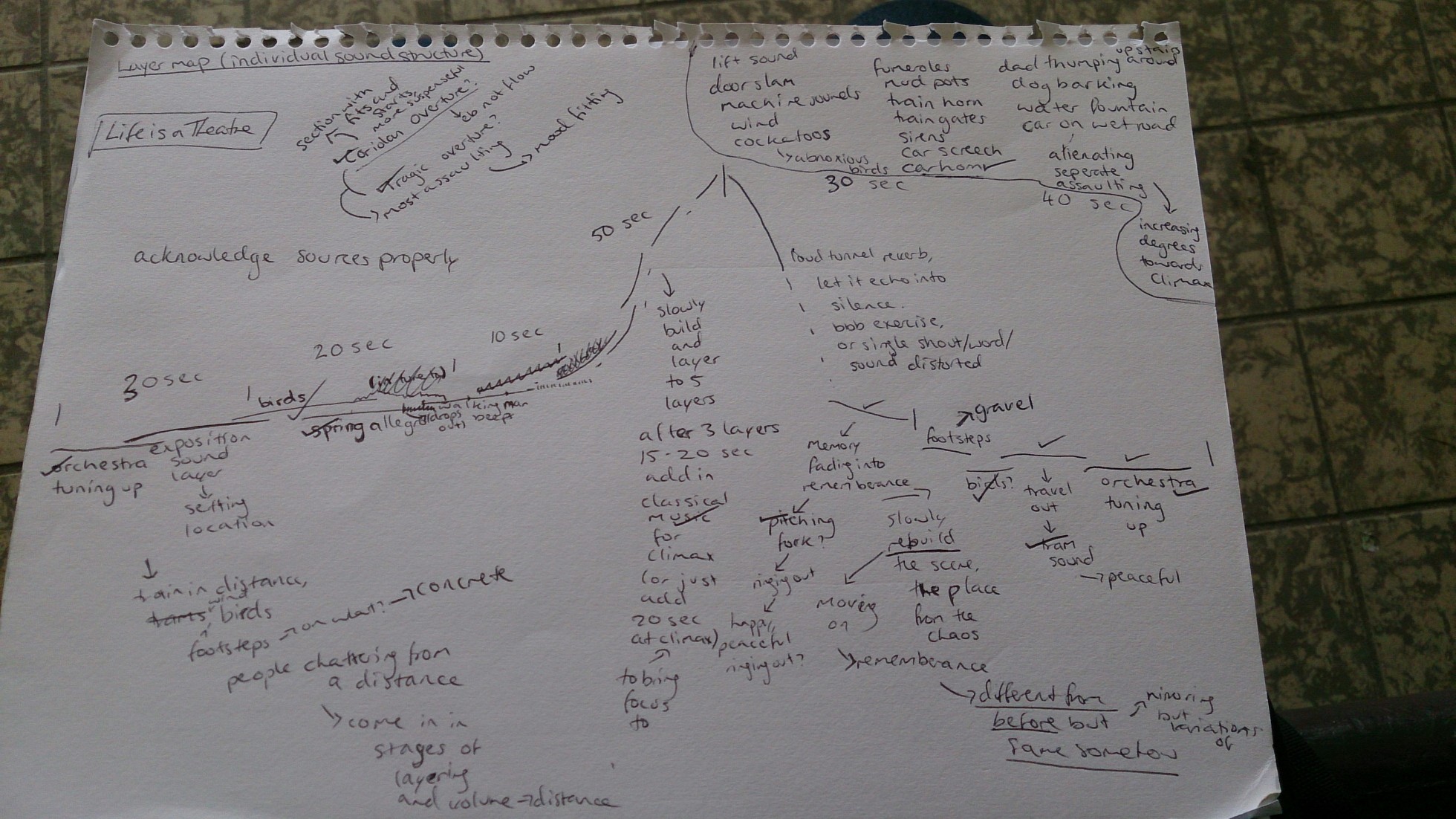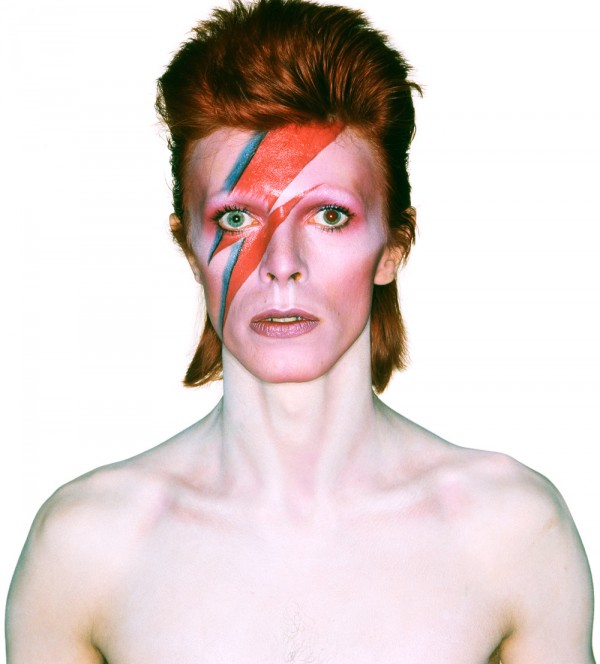
It’s finally here. The big one. The one and only project four. The project which brings together all of our collective explorations from the last three projects into one great, big… Well, project. For my project I decided to explore the concept of meaning itself and how each individual interprets meaning differently.
So here’s my final project (reflection is below it):
A lot of the sounds I used had a similar fidelity to the location, time of day and situation my character was in, but each sound was slightly out of sync with its supposed object of origin, creating an out of sync environment that constantly shifts and adjusts to the emotional tone of the piece. For example, at the end of the piece I blended two separate train trips together to create an appropriate emotional tone. I also used different recording from different locations, times of day and atmospheres to create my spaces, building a very strange and convoluted world. The coffee cup I used had water in it so created a swishing sound not similar to coffee, but water instead. All of this created an off-kilter feeling for me, but the more I asked people about the piece, the more I realised that the exact atmosphere didn’t need to match exactly, so long as it was present and created a logical world for the character.
The piece really evolved a great deal for me as I got deeper and deeper into the creative process. The original concept was more around the way we develop narrative through space as well as through relationships, focussing more on the idea of using space to develop the narrative. But it steadily evolved into a piece that, when boiled down, really explores how we create meaning through narrative and emotional connections to main characters, through whom we see the story unfold, building relationships and developing the world of that character with the character in mind.
Creating an individualised experience and world through ambiguous language and environments in which most, if not everyone can relate in some way and bestow upon the character their own experiences, emotions, meanings, hopes and desires for each situation. By not making the character an individual she has essentially become an individual to every person who listens to it, just in very different ways each time as each person’s unique experiences are reflected within the character’s own, and the world in which the listener and the character now inhabit together, having created it together. Having the ability to give someone else the chance to create an entire world in their own mind is a very intriguing and enticing concept for me, especially the way in which each person experiences the piece, its narrative and inherent connotations differently.
I was really inspired to create this piece after listening to “Remember the Baby” (http://thesarahawards.com/listen/2015/6/18/remember-the-baby-brby-the-truth) by Louis Kornfeld and Jonathan Mitchell. The piece explores the way the inner voice interacts with the external voice during a stroke. I was inspired by this idea of exploring the powerful capabilities of the inner voice, especially when thinking about the layers within which we communicate with ourselves, having almost multiple conversations at once with the knowledge that we are communicating with ourselves.
Through this piece I used a wide variety of techniques to create the inner voice and distinguish it from the external voice. Firstly, during the recording process, I recorded all of the lines for the inner voice as close to the microphone as possible, allowing for a feeling of closeness to be created. This being said, I did the opposite for the external voice, imagining where my voice would drop relative to my own ears, in a way attempting to reconstruct the way we hear and the structure of our heads through sound. From this point I then went to develop the ‘space’ in which the inner voice resides, creating a special reverb setting for the inner voice which created just the right amount of echo and room within the space of the figurative head. I then proceeded to pan the inner voice. This allowed me to create an inner voice that consciously moves around the ‘head space’, disturbing, poking and prodding at itself. The inner voice is the key to the piece and was the most interesting part to create.
For this piece I experimented a great deal with the recording process, gathering my sounds as separately as possible through foley (walking around with a shotgun microphone and a boom pole recording all the sounds of my character’s environment). Once I had gathered all of my sounds separately, I then went through the process of selecting and composing them into the layered and developed piece I have now. This was an interesting process, as in order to create the sequence of events in which a car drives past cat-calling my character I had to record each individual sound separately and then hope that they would layer together properly in post. This meant recording the window winding down, the car honking, the wolf whistle, the car actually moving, and the coffee cup dropping all separately and cleanly in an outdoor environment. However, this was not the case with the voices, as I recorded each of these cleanly in the multi-track studio. This cleanliness of the voice allowed for a much rougher environment, as the focus was on the voice of the character and not the environment itself.






